Benissa is a municipality in the Valencian Community, Spain. It is located in the northeast of the province of Alicante, in the heart of the Marina Alta. The wonderful views of the coastline stand out, with its 4 kilometres of coastline bathed by transparent waters, which invite you to bathe and practice water sports. Benissa has a population of about 11,288 inhabitants (2020 data), of which more than 40% are foreigners, mainly from European Union countries, mainly Germany and the United Kingdom.
The municipality, with a surface area of 69.7 km2, is characterised by a very rectangular and square shape, with a very heterogeneous orography: from the coast, formed mostly by small coves and cliffs; to the mountainous areas, formed by the mountain ranges of Oltá, La Solana, La Malla Verda and the most outstanding, the Sierra de Bernia; as well as forests and natural parks.
Also, thanks to its coastal location, the mountain peaks offer spectacular views of the sea. In fact, you can fully merge with nature through the numerous hiking trails, which are of varying levels of difficulty; ideal for taking in the beauty and tranquillity of the natural surroundings, as well as enjoying the fresh mountain air.
Benissa also offers a wide range of leisure activities related to the sea: diving, scuba diving, surfing, windsurfing, sailing, all this, and much more!
How to get to Benissa?
Nationally, through the national road N-332, which passes through the centre of the town; and with Europe through the AP-7 motorway with exit Benissa. It also has a wide network of trains and buses.
Climate of Benissa
The climate in Benissa is practically the same as in all the towns in the Marina Alta: not very cold and mild in winter, not very rainy throughout the year, and hot in summer.
History of Benissa
Benissa is one of the oldest towns in the Costa Blanca. In fact, there were settlements here long before Christ, as evidenced by prehistoric cave paintings.
In addition, numerous archaeological finds (coins, amphorae, tools, jewellery, etc.) from the Roman and Arab periods have been made here. The origin of the place name Benisa is Arabic: Beni Isa or “sons of Isa”, a name of a tribe. The names of many of the municipality’s districts are also Arabic in origin: La Alfama, La Rápita, El Rafalet. This confirms the historical thesis that, in 1248, when the troops of James I of Aragon arrived to annex this area to the Kingdom of Valencia, there was already an important Arab population centre here.
Benissa, along with Altea, Calpe and Teulada, were owned by Roger de Lauria’s lordship. During the 15th and 16th centuries, the town suffered numerous attacks by Barbary pirates. Its population was still predominantly Muslim, with the Muslims living mostly in the countryside and the Christians in the town centre. After the Muslims’ expulsion from the city in 1609, the liberated lands were settled by natives from the Pyrenees, Aragon and Catalonia. It was they who built the city wall.
The history of this place is conducive to the mixture of ideas and cultures that is reflected in the character of its people, who are used to the union of brotherly peoples.
Economy of Benissa
The main economic activity, which in the past was agriculture, is nowadays the service sector, based on tourism. It also has several industrial estates with numerous companies from different fields.
The main sights of Benissa
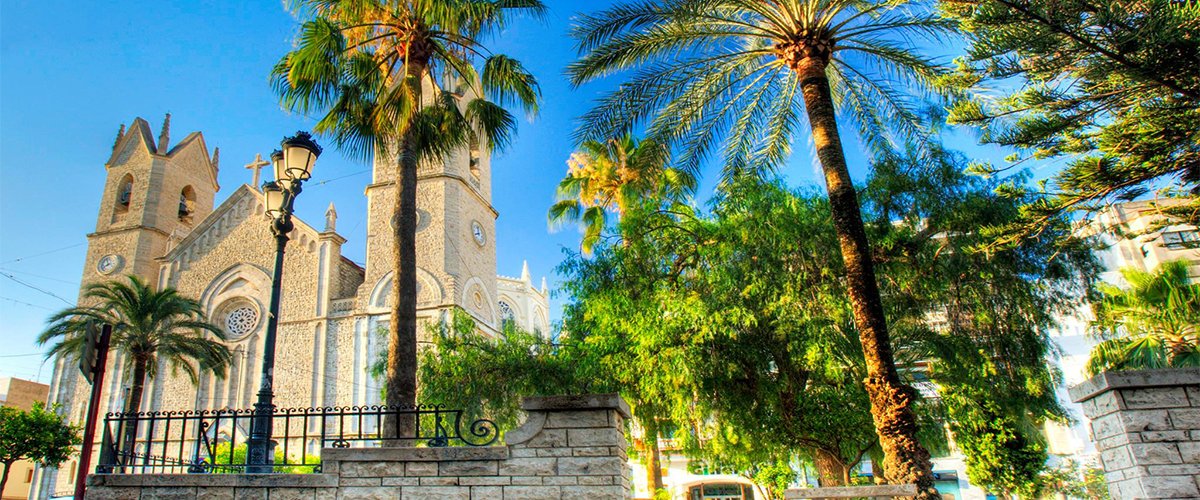
To walk through Benissa is to enjoy its cobbled streets with a medieval flavour, its Moorish-inspired trellises, and the stately mansions of its old mansions. It is, in short, to savour history and ancestral customs. Benissa has been able to pamper a well-kept town centre in which numerous buildings and monuments can be admired. Of particular note are the old Hospital, a shelter for the poor and needy since 1790, now the Town Hall, and two notable houses, the Andrés and Pere Bigot houses, now the campus satellite University of Alicante. The owner of the latter was a Spanish emigrant who became rich in Latin America – his real name was Pedro Ivars Sala – who emigrated to the United States in 1917. He returned years later and dedicated his life to making the inhabitants of Benissa happy: he collected different objects and decorated his large house with them, he told endless anecdotes to children and young people about his American adventures, and he even delighted them with his accordion.
From much further back dates another interesting palatial building, the Abargues House Museum, from the 18th and 19th centuries, which conserves many of its original elements and is a faithful reflection of the noble atmosphere of the period: coats of arms, staircases, chests, chairs, dining rooms, the old kitchen, the stable, the private chapel, the noble and servants bedrooms. The mansion is an authentic piece of history that transports us to the leisurely way of life of the noble Alicante families of the time.
The historic centre of Benissa
You will discover its historical centre, with a marked medieval character, which will take you through its history from the Middle Ages to the present day, with its monuments and buildings of great value. Along this street, you will be able to see stately houses with latticed balconies.
The Town Hall
It is located in the Plaza del Portal. It was the Town Hospital in 1790.
Location, here.
Purísima Xiqueta and San Pedro Apóstol Parish Church
Also known as the Catedral de la Marina. It is a neo-Gothic style church with three naves, in which the beauty of the central dome and its altar stand out. The church was completed in 1929.
Location, here.
Plaza de la Iglesia Vieja
The church-fortress of San Pedro, built in the 14th century, is located here. It was restored in the 16th century and destroyed in the early 1950s. Today, the square is used for various cultural events.
Location, here.
University of Alicante Satellite Campus
The educational complex was housed in several 18th-century palaces and stately homes, offering courses under the auspices of the University of Alicante.
Location, here.
La Lonja Stock Exchange
This is the oldest monument in the municipality and dates back to the 16th century. Today, it houses exhibitions of great cultural and artistic value.
Location, here.
Riberero
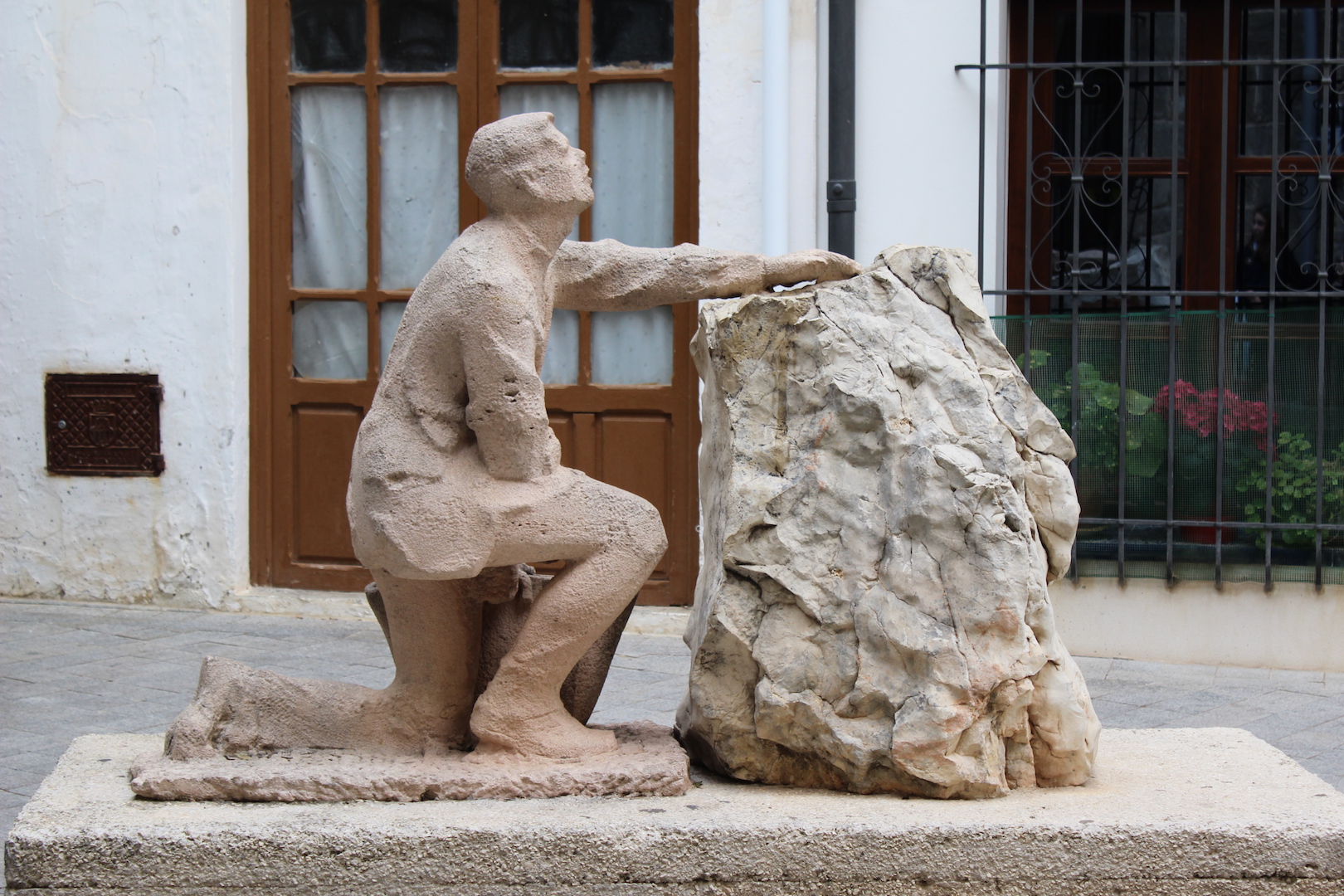
A symbolic figure of the inhabitants of Benissa, who travelled twice a year to the coastal area of the Valencian Community to plant and harvest rice. The monument represents the figure of a man praying, as the ribereros traditionally prayed before setting off.
Casa de la Cultura
The Torres Orduña Palace, which today houses the library, the exhibition hall, the auditorium and the assembly hall.
House of Juan Vives
Legend has it that the owners of this house welcomed pilgrims who gave them an image of the Virgin Mary, who became the city’s patron saint.
Location, here.
Casa de la Juventud
Historically, it was a commercial building. Its ground floor was used for the weekly market. It was also the headquarters of the Town Hall until it was moved to its current location. Today it houses the Youth Information Centre (Centro de Información Juvenil CIJ), an exhibition hall and several auditoriums.
Convent of the Franciscan Fathers
The convent, founded by Franciscan monks who settled in Benissa in 1611, was inaugurated on 23rd September 1613. The new monastery served as another bulwark against pirate attacks. It is a sturdy Renaissance building in a simple and austere style. It has a small museum inside, which exhibits various objects belonging to the monastery and gifts left by the monks who have visited it throughout its long history.
Location, here.
Franciscan Monastery
This is where young men from all over the country studied: here, they completed the first part of their education for entry into the Franciscan order.
Gastronomy of Benissa
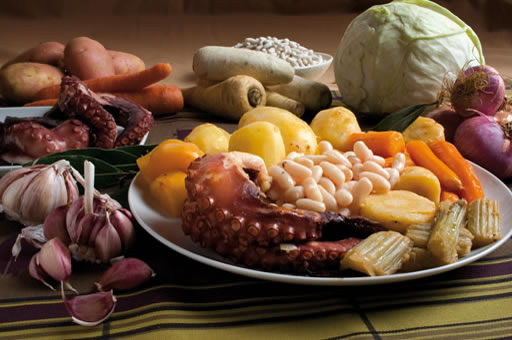
In Benissa, there is a saying, “El diumenge a Benissa, pilota i missa” which refers to the main traditional dish of the area, pilotas. It is also worth trying the “putxero de polp”, an octopus stew. The recipe is almost identical to that of a traditional stew; however, the meat is replaced by octopus. Like all coastal towns, in Benissa, you will find a wide variety of delicious fish and seafood specialities.
Other specialities are “sang amb ceba” -blood with onion-, the traditional tortas (coques) cooked on high heat: “coques de mullador” or “coques al calfó”, and the “dacsa” -made with cod, vegetables and sausages-. One of Benissa’s gastronomic treasures is its traditional sausages, some of the best in the Marina Alta region. The most popular types of sausages, available in the local butcher’s shops, are botifarras, blanquets and bufa. It is also worth trying sobrassada del budell cular or sobrassada de gener.
In the bakery and pastry section, it is essential to try the panous, pumpkin fritters, coca maría, moniato or almond pastissets, aniseed or orange rotllets, rosegons (hard almond biscuits), tortà (almond flour cake), the cured sausage and salted meats, the coca farcida stuffed with peas.
As for wine, Benissa, as a municipality with a rich wine-growing history, offers a wide range of varieties to suit all tastes. We recommend paying special attention to the muscatel and mistelas. The outstanding development of wine growing in Benissa is due to its favourable location, between the sea and the mountains, and to the sea breeze, known as Llebeig, which keeps the climate cool in summer and mild in winter, favouring the cultivation of excellent grapes, particularly the native Muscat of Alexandria.
The Wine Route

It connects the regions of Vinallopo (municipalities of Algueña, Monóvar, Novelda, Petrer, Pinoso, Salinas, Villena and Elche) with the southern regions of Marina Alta and Marina Baixa (municipalities of Alcalalí), Benissa, Senija, Llíber, Benigembla, Parcent, Castell de Castells, Murla, Xaló and the municipality of Alfas del Pi to the north.
All the information about the itinerary can be found on the official website: rutadelvinodealicante.com
Benissa Festivities
Benissa’s main fiesta is the festivities in honour of the town’s patron saint, the Puríssima Xiqueta (the Puríssima Niña). It starts on the fourth Sunday of April and lasts ten days. During this festivity, there are free concerts, Bous al Carrer” (bulls in the street), religious processions, and much more.
It is also celebrated in Benissa:
- The Moors and Christians festivities in honour of San Pedro (the weekend closest to 29th June);
- Fira and Porrat in honour of San Antonio (3 consecutive weekends), with a medieval fair;
- Local summer festivals in all the town’s neighbourhoods.
Beaches in Benissa
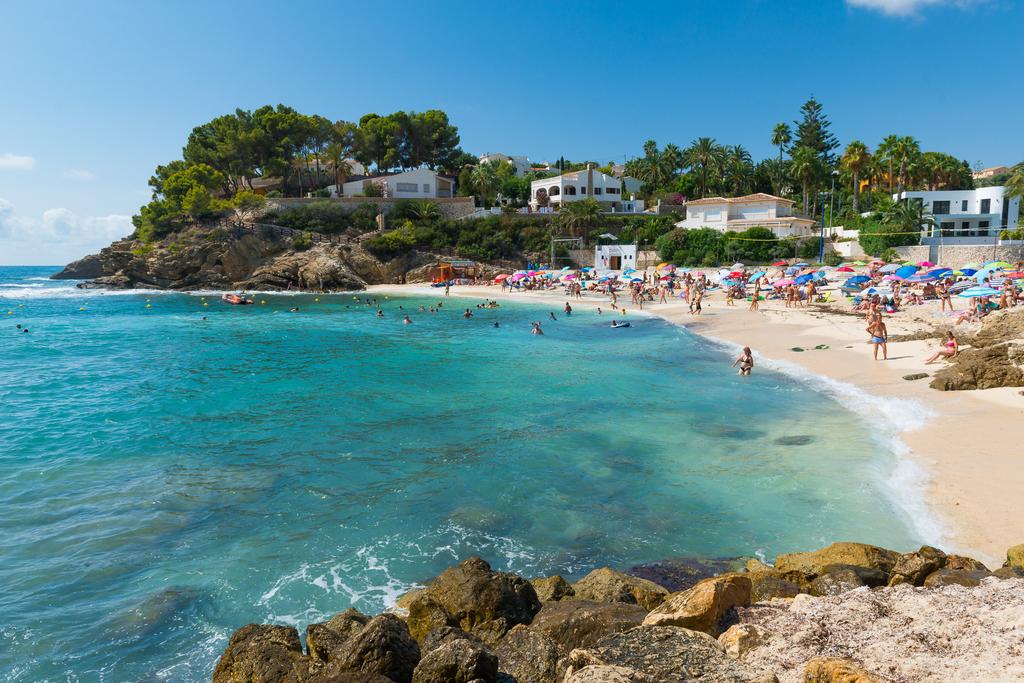
La Fustera Beach
This is a sandy blue-flagged beach with an excellent tourist infrastructure. The seabed surrounding this beach is dominated by majestic Posidonia meadows, home to many marine creatures, where you can see contrasts of nature and sea. This is an ideal place for snorkelling. Nearby is the Cova de la Fustera, 10 metres high, where you can see a magnificent view of both the Benissa coastline and Calpe’s Peñón de Ifach.
Pinets Cove
This small and intimate cove is perfect for a family holiday. The beach is partly sandy and partly pebble. From here, you can walk to the picturesque surroundings known as Mar Morta i Roques Negres (the Dead Sea and Black Rocks).
Platgeta de l’Advocat Cove
A beach with an excellent infrastructure ideal for long walks. It is perfect for snorkelling, as well as for spending a comfortable holiday with children. In summer, there is also a beach bar open.
Baladrar Cove
A picturesque cove with crystal clear waters, perfect for snorkelling. In summer, there is a beach bar with live music.
Bassetes Bay
Situated on the border between the municipalities of Benissa and Calpe, this bay offers spectacular views of the Peñón de Ifach in Calpe. Here begins a beautiful walk along the famous Paseo Ecológico (Ecological Promenade). The sea is shallow and crystal clear. The bay is home to the Club Náutico Les Besetes.
You may be interested in the following articles about the beaches of the Costa Blanca:
- 10 can’t-miss beaches in Denia
- Orihuela Costa: Beaches and Tourists Attractions
- The Best Beaches on the Costa Blanca – Top 100
Other activities in Benissa
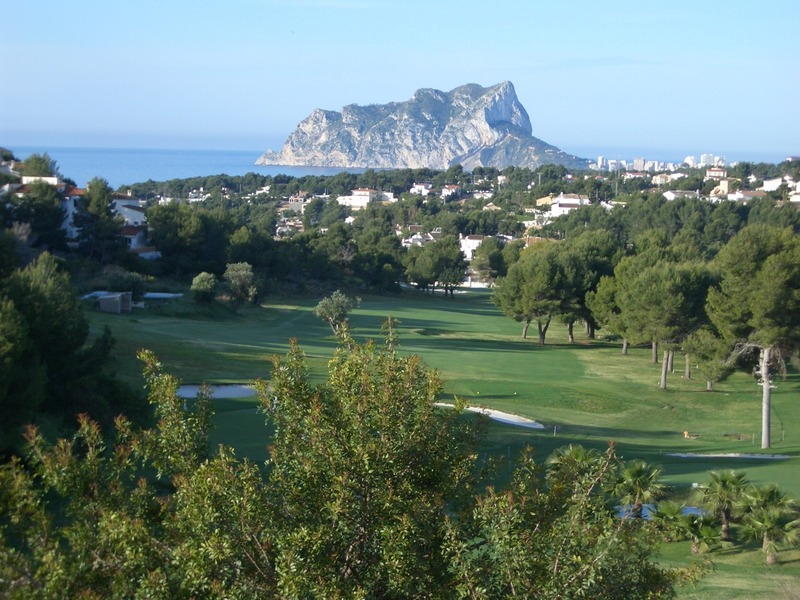
Benissa offers a wide variety of leisure facilities. There are parks, playgrounds, numerous bars, restaurants and cafés, shops, markets and shopping centres, as well as sports clubs. Here are some of them.
Water sports and leisure centres in Benissa
- Les Basetes Diving Centre (Centro de buceo Les Basetes)
695 199 702
buceobasetes.com - Mediterranean Jet Náutica
656 816 369
mjnautica.com - Les Bassetes Sailing Club (Club Náutico Les Bassetes)
96 583 12 13
www.cnlesbasetes.com - Las Antípodas Sailing School (Escuela de Vela Las Antípodas)
96 583 83 10 / 665 853 200
lasantipodas.com - Ifach Golf Club
Address: Ctra. Moraira-Calp Km. 3 Urb. San Jaime. Calle Micheta, 5.
Telephone: 96 649 71 14
E-mail: [email protected]
Website: golfifach.com - Buenavista Tennis Club
Address: Urb. Buenavista. C/ El Tudó, 19.
Tel: 96 574 78 67 / 607 312 860.
E-mail – [email protected].
Website: tenisbuenavista.es. - Tennis Resort Finca Pinada
Address: Tros Vell, Berdica, nº 44.
Telephone: 17 497 915.
E-mail address: [email protected].
Website: tennis-spanien.com. - Equestrian Club Benissa (Club Hípico Benissa)
Address: Pda. Senijola, 2.
Tel: 96 573 18 32 / 609 282 182.
E-mail: [email protected]
Web site: clubhipicobenissa.com.
Benissa’s nature: hiking routes
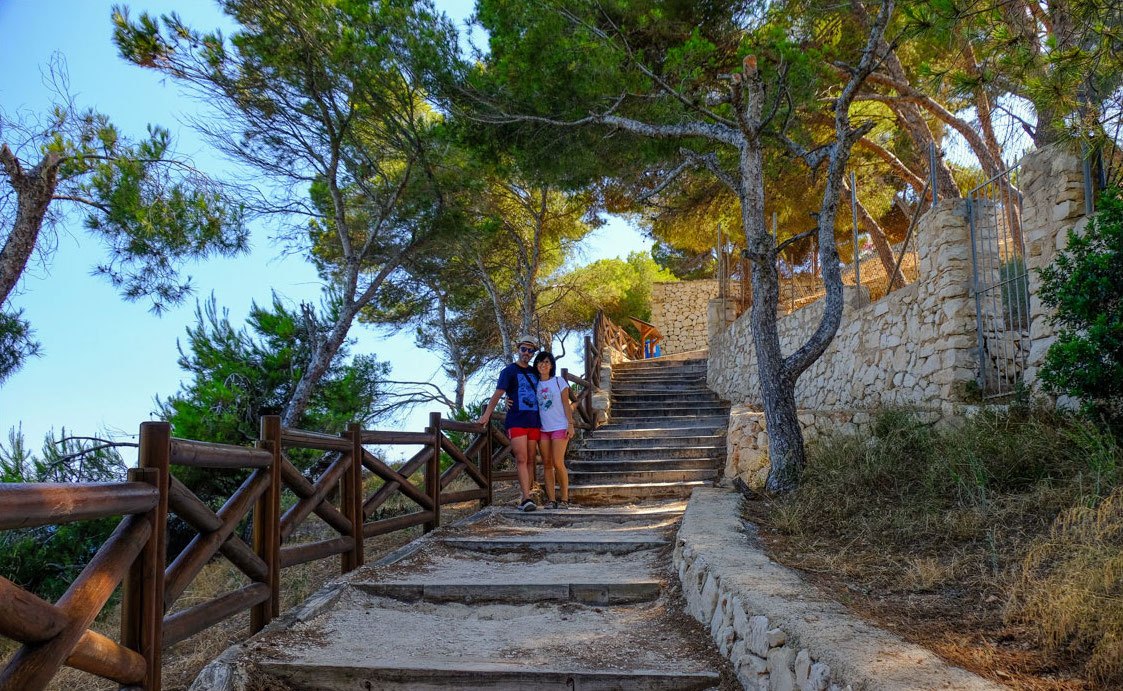
Ecological Walk hiking route (Ruta de senderismo del Paseo Ecológico)
This route is called the “ecological route” and lives up to its name. You will merge with nature on this route. You will enjoy the cleanest air, the beautiful scenery and the fresh sea breeze. The route is accessible to all fitness levels and starts from Tourist Info Benissa Playa, located here.
It consists of two itineraries, south and north, and is almost 4 kilometres long. In addition, this ecological walk connects Benissa and Calpe along the coast, allowing you to enjoy the wonderful views of the Mediterranean Sea and, of course, to get to know one of the most beautiful places to see in Benissa.
Itinerary through the hermitages of Benissa (Ruta de las Ermitas)
Another interesting route to see all the hermitages of Benissa and enjoy the beautiful green landscape and clean air. Almost all the hermitages were built at the beginning of the 19th century. The only exception is Ermita de Santa Anna, which dates back to 1613.
- For an itinerary of the hermitages of Benissa on Wikiloc, click here.
- Click here for more information.
The Ermitas you will see are:
- Ermita de Pinos. Distance from Benissa – 9 km
- Ermita de Benimarco. Distance from Benissa: 4 km.
- Ermita de Santa Ana. Distance from Benissa: 1 km.
- Ermita de Pedramala. Distance from Benissa: 5 km.
- Ermita de Lleus. Distance from Benissa: 5 km.
- Ermita de Benimarraig. Distance from Benissa: 2,5 km.
Route of the Riberers or old Camí Vell de València
As its name suggests, this route was used by the ribereros of Benissa, who travelled to Valencia twice a year to plant and harvest rice. This route offers wonderful views of the Marina Alta region, its old traditional rural architecture, and, of course, the pleasure of enjoying the silence, tranquillity and fresh air.
- Duration: 4 hours.
- Length: 14 km.
- Type of route: a circular route.
- Level of complexity: medium.
- Maximum altitude: 430 m above sea level.
- Route on Wikiloc, here.
- More information about the route, here.
Oltà mountain route
The Oltà Route is one of the most beautiful mountain ranges on the Costa Blanca.
- Duration: 2 hours.
- Length: 7 km.
- Type of route: uneven terrain in several sections.
- Level of difficulty: medium.
- Maximum altitude: 587 m above sea level.
- Route on Wikiloc, here.
- More information about the route, here.
Hiking in the Bernia Mountains (Bèrnia Route)

The immense natural wall that separates the Marina Alta and Baja with a beautiful circular hiking route with the singularity that from the path you have to cross the mountain through a natural tunnel excavated in stone, through which you reach a place with magnificent views of the coastline of the Costa Blanca and the valleys and mountains of the Mediterranean.
The Sierra de Bèrnia is an essential place to see in Benissa and not to be missed if you are a nature lover.
- Duration: 3.5 hours.
- Length: 8 km.
- Type of route: a circular route.
- Difficulty level: medium-high.
- Maximum altitude: 850 m above sea level.
- Route on Wikiloc, here.
- More information about the route, here
La Solana Route
This route offers great views of the villages in the Pop Valley (Valle de Pop).
- Duration: 5.5 hours.
- Length: 12 km.
- Type of route: linear.
- Difficulty level: medium.
- Maximum altitude: 724 m above sea level.
- Route on Wikiloc, here.
- More information about the route, here.
Molí del Quisi Route
A really unique itinerary that offers the possibility of discovering different types of traditional constructions used by the villagers of Benissa: the Lavadero del Pou d’Avall, a natural washhouse where women used to wash their clothes, the Santa Anna Hermitage, the oldest in Benissa, and the hydraulic structure of the Molí del Quisi from the 15th century.
- Duration: 3 hours.
- Length: 8.7 km.
- Type of route: circular.
- Level of difficulty: low.
- Maximum height: 170 m above sea level.
- Route on Wikiloc, here.
- More information about the route, here.
Camins de Pedra i Aigua Route
This route connects all the municipalities located in the Valle de Pop (Pop Valley), where life has always been closely linked to two rivers, the Chalo and the Gorgos. This route allows you to discover the ethnological heritage of this area, as well as its traditional rural architecture.
- Duration: 5 hours.
- Duration: depends on where you start.
- Type of path: linear.
- Level of difficulty: medium.
- Maximum altitude: 365 m above sea level.
The route can be started in any of the municipalities of Valle de Pop (Benissa, Senija, Llíber, Xaló, Alcalalí, Parcent, Murla, Benigembla, Castell de Castells) and can be completed in several stages. In Benissa, the route starts at the Franciscan monastery.
Markets in and around Benissa
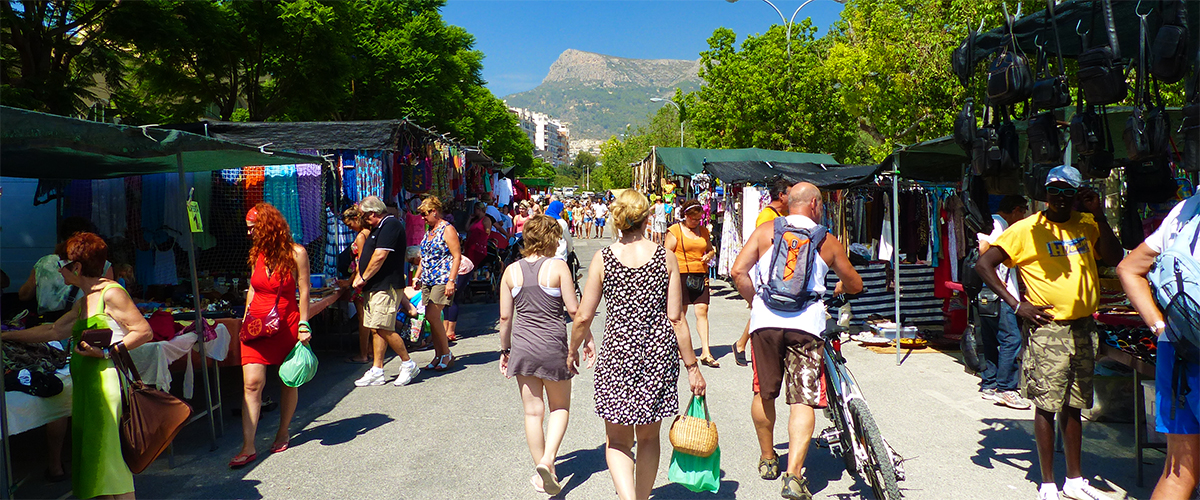
A guide to the region would not be complete without visiting at least one of the markets in Benissa or the surrounding towns.
Saturday weekly market
Here you can buy all kinds of fruit and vegetables, cheeses, sausages, sweets and much more.
- When: Every Saturday from 8.00 am to 1.30 pm.
- Where: Sant Josep, Sant Nicolau and Hort de Bordes streets.
Organic markets
- Benissa, Mercat dels Porxes, every second Saturday of the month, from 9.00 to 14.00 (except July and August).
- Chalot, Mercat de la Terra, every Saturday, from 18:00 to 22:00 (except summer months).
- Husus Pobre, Mercat del Riurau, Sundays, from 18.00 to 23.00 hours.
- Val de Gallinera, Mercat de la Foradà, every second Sunday of the month, from 09.00 to 14.00 hours (except July and August).
- Val de Laguar, Mercat de Laguar, every 4th Sunday of the month, from 09.00 to 14.00 hours (except July and August).
Fish market
- When: Monday to Friday.
- Where: Calpe, Jávea, Denia at 17.00.
Flea markets
- Calpe, Avda. País Valencià, Wednesday.
- Denia, Torrecremada, Fridays.
- Chalo, Antigüedades, Paraje Azud, Saturdays.
- Els Poblets, Parque de Miraflor, Saturdays.
- La Nusia, Antigüedades, Ctra. Director a Polop, on Sundays.
- Verhel, Polígono industrial, on Sundays.
- Teulada, Polígono Industrial, on Sundays.
- Pedreguer, Polígono Industrial, on Sundays.
- Jesús Pobre, the first Sunday of the month.
Real Estate in Benissa

Benissa is one of the most expensive towns in the Costa Blanca to buy a property, which is not surprising given all the advantages of the area. The average cost per square metre here, according to the property website Idealista in August, was 2174 euros.
The most affordable housing – in the area of Benissa town, situated within walking distance of the sea – averaged 1789 € per square metre. The second-hand property market: apartments here can be bought from 40,000 €; semi-detached houses from 67,000 €; detached houses from 85,000 €.
Another slightly more expensive area – La Viña – Montemar – San Jaime – on average 2290 euros per m2. This area also has no access to the sea, but there are mountains and it is very green. The properties here are mainly represented by low-rise buildings: houses, chalets, bungalows and villas. There are few flats here. You can buy a nice house from 170 000 euros and an apartment from 79 000 euros.
In the area of Cala Advocat – Baladrar, adjacent to the coast, the average cost of real estate is 2946 euros per square metre. You can buy apartments here from 100,000 euros, although the offer is limited: there are many more houses for sale. A spacious house with a swimming pool here is priced from 230,000 euros, and becoming the owner of a villa is possible from 250,000 euros.
The beach area of La Fustera – is the most expensive area to buy a property in Benissa. The average cost per square metre here is 3126 euros. A small one-bedroom apartment can be bought here from 115 000 euros; a two-bedroom apartment from 150 000 euros. A semi-detached house, from 130 000 euros and a detached house, from 250 000 euros.
If you are interested in buying a property in Benissa or in other locations in the Costa Blanca, you can see all the options available in our catalogue.



